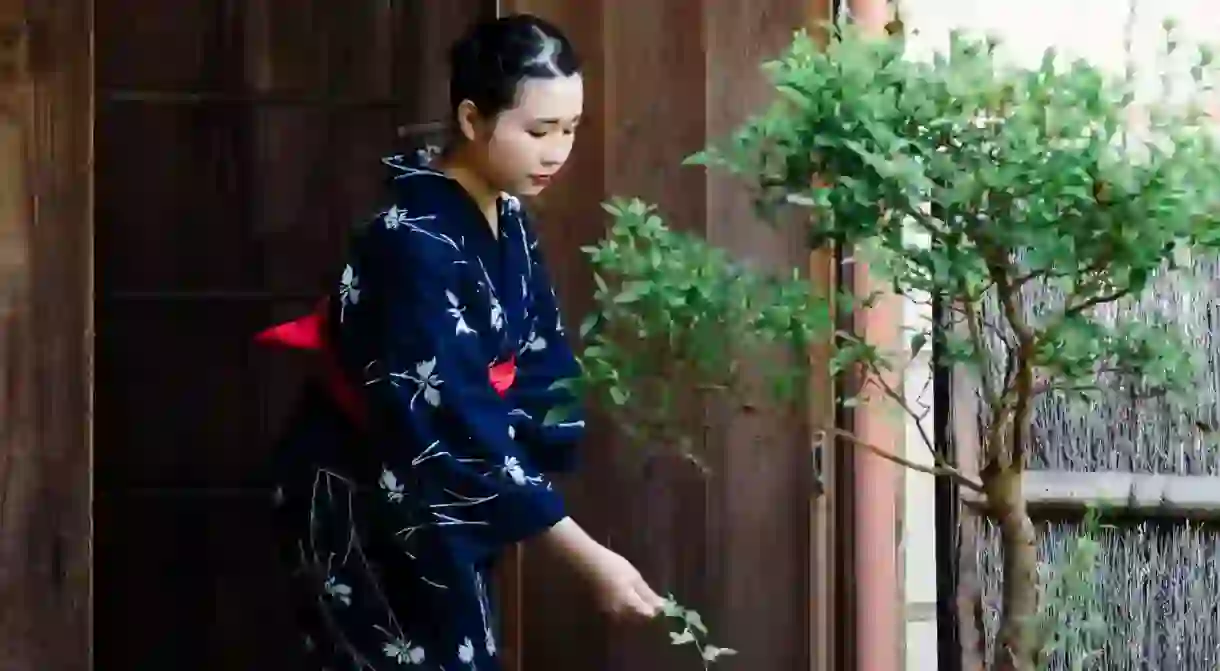The Secret Life of an Apprentice Geisha

Japanese geisha still exist, with a handful of young women training tirelessly to keep the tradition alive. Culture Trip follows Tokyo high-school graduate Sachika as she goes about the business of being an apprentice geisha in modern Japan – all the way from the shopping mall to the banquet house.
The geisha tradition began in Japan during the 18th century. The original performers were men who, like court jesters, would entertain rich and powerful clients through musical performance, dance and storytelling.


With its roots in the kanji for “art” 芸 (gei) and “doer” 者 (sha), the term “geisha” essentially means “performance artist”. As times changed, so too did the profession, with women turning the role into the one we see today. Although there’s no exact number on record, it’s estimated that between 40,000 and 80,000 geisha were working during the early Shōwa era (1926-89). Nowadays, estimates suggest that there are just 600 in the entire country.
What inspires a woman to become a geisha? For Sachika, it was to do with family. “I had done classical ballet for a long time, but I wanted to try the Japanese dance that my grandmother had practised,” she says.

Sachika’s day revolves around her events calendar, which is filled with everything from domestic chores to banquet performances. “When we have customers, we prepare for the ozashiki banquet three hours beforehand, go over the dance, and stand before the customers. During off hours, we usually practise, tidy the kimono, or do general housekeeping,” Sachika explains.



When Sachika has to buy make-up on the way to work, she heads straight for Shinjuku in central Tokyo, like almost every other teenage girl in Tokyo with the same goal. She regularly visits the Shinjuku Mylord Shopping Center, as well as Loft Store and other small boutiques.

A geisha typically performs in a custom-built house equipped with live performance spaces and rooms for serving food and tea. One of the houses where Sachika works is in the beachside town of Kamakura (often referred to as “little Kyoto”), located an hour south of central Tokyo in the Kanagawa Prefecture.
A popular holiday destination, Kamakura has only a handful of banquet houses left. Sachika’s geisha mother is Sayuki, or Fiona Graham, the first ever Western geisha. After studying human sciences and teaching at Keio University Tokyo, Graham went on to study Japanese corporate culture at the University of Oxford. She made her debut as a geisha in 2007, originally undertaking the task as an academic project. Today, Sayuki trains Sachika and other young hangyoku.

“Hangyoku” translates to “half jewel”, referring to the fact that geisha-in-training were once paid half the wage of their fully qualified colleagues. “Kyoto geisha apprentices, who wear the draping sash, are called maiko,” Sachika explains. “But in Tokyo, the sash is shorter and the apprentices are called hangyoku.” Sachika points out that “in Kyoto, [geisha] start at around 15 years. In Tokyo [they] begin after high school as hangyoku, so at around 18 years old.”



The word maiko translates as “dancing child”. Unlike their hangyoku cousins, Kyoto geisha trainees are required to learn region-specific skills including dialect voice training, and the intricate ins and outs of local traditions and rituals.
So, what’s the best thing about being a geisha? “What I like is the time I spend having conversations with customers or seeing them enjoying my dance,” Sachika says. “Those times are the best.”

Performing as a geisha is a lot like being a ballet dancer. Poise, balance and fluid movements are all key, and Sachika feels lucky that she learnt those skills during childhood dance classes. “Any dance involves moving the body, training the body to have balance. I train to build strength and endurance,” she says.


Before a show, the girls do their make-up together, helping one another under the watchful eye of the house’s geisha mother. You can tell the age of a geisha by the make-up she wears. Maiko and hangyoku leave a patch of unpainted skin on the nape of their neck as a symbol that they are still young and have not yet earned their full geisha wigs. Trainee geisha have just one painted lip and pink make-up around their eyes, whereas qualified geisha have fully painted lips and black eye make-up.




Sachika believes that the future of geisha – a tradition exclusive to Japan – may lay in the hands of foreign visitors. “There are a lot of Japanese people who don’t know about geisha in Tokyo, so if foreigners come and spread the word, recognition for geisha would not only expand within Japan but overseas, and the wider world would learn about them,” she says.














